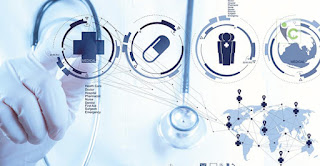Wearable Sensor Market is set to experience revolutionary growth by 2028
In the previous five years, Internet
penetration has expanded significantly, and one-third of the worldwide
population now utilizes the Internet at higher bandwidths. As a result, the
number of Internet-enabled smart devices in emerging countries has surged.
Smartphones are one of the most popular portable electronics. The wearable
ecosystem is largely used to collect and track health and fitness data for
children aged 0 to 9 and adults aged 60 and up. According to Cisco, 6.3 billion
individuals and 500 million devices were linked to the Internet in 2003, and
the number is expected to reach 6.58 billion devices by 2020 as customers'
interest shifts to smart gadgets.
More expenditure on consumer electronics, increased
urbanization, and improved lifestyles of the growing population have enhanced
health and safety consciousness among individuals, which is encouraging the
rise of wearable gadgets. Affordability and ergonomics provided by advances in
miniaturized electronics, the proliferation of smartphones and connected
devices, and the increasing need for low power, smaller, lighter sensors, and
enhanced performance are also factors driving the growth of wearable devices
such as Fitbit, ear wears, and smart watches.
With numerous industries investing heavily in IoT devices
and IoT sensor usage dropping, a considerable increase in demand for wearable devices across multiple sectors is projected. This is predicted to greatly
drive wearable sensor market growth in the near future.




Comments
Post a Comment